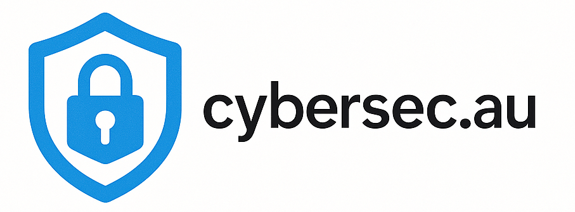Australian healthcare providers face unique cybersecurity challenges, managing sensitive patient data while maintaining critical care operations. With healthcare being the most targeted industry for cyberattacks, comprehensive security strategies are essential for protecting patient privacy, ensuring operational continuity, and meeting regulatory compliance requirements.
🏥 Healthcare Cyber Threat Reality
Unique Healthcare Cybersecurity Challenges
Critical Care Dependencies
Healthcare systems cannot be taken offline for security maintenance:
- Life-critical systems: Patient monitoring and life support equipment
- 24/7 operations: Continuous care requirements
- Emergency access: Need for rapid access during medical emergencies
- Legacy systems: Older medical equipment with limited security features
Regulatory Complexity
Healthcare providers must navigate multiple regulatory frameworks:
- Privacy Act 1988: Personal information protection requirements
- Health Records Acts: State-specific health information regulations
- Therapeutic Goods Administration: Medical device regulations
- Professional standards: Medical board and professional body requirements
Diverse Technology Ecosystem
Healthcare environments include varied technology systems:
- Electronic Health Records (EHR): Patient data management systems
- Medical devices: Connected diagnostic and treatment equipment
- Practice management: Scheduling, billing, and administrative systems
- Telehealth platforms: Remote consultation and monitoring tools
Healthcare-Specific Cyber Threats
Ransomware Targeting Healthcare
Healthcare is the most targeted industry for ransomware attacks:
- Operational disruption: Attacks designed to disrupt patient care
- Data encryption: Patient records and medical images encrypted
- Double extortion: Threats to publish sensitive patient data
- Supply chain attacks: Targeting healthcare software vendors
Medical Device Vulnerabilities
Connected medical devices present unique security challenges:
- Legacy vulnerabilities: Older devices with unpatched security flaws
- Default credentials: Devices shipped with weak default passwords
- Network exposure: Devices connected to hospital networks
- Update challenges: Difficulty patching medical device software
Insider Threats
Healthcare environments face elevated insider threat risks:
- Privileged access: Medical staff require broad access to patient data
- Data value: Patient records valuable on black markets
- Emotional factors: Personal relationships affecting data access decisions
- Contractor access: Temporary staff and vendor access management
Healthcare Cybersecurity Framework
Patient Data Protection
Comprehensive protection for patient health information:
- Data encryption: Encryption at rest and in transit for all patient data
- Access controls: Role-based access with multi-factor authentication
- Audit logging: Complete audit trails for all data access
- Data minimization: Limit data collection and retention
Medical Device Security
Securing connected medical equipment:
- Network segmentation: Isolate medical devices from general networks
- Device inventory: Maintain complete inventory of connected devices
- Vulnerability management: Regular security assessments of medical devices
- Incident response: Procedures for medical device security incidents
Telehealth Security
Protecting remote healthcare delivery:
- Platform security: Secure video conferencing and communication
- Data transmission: Encrypted communication channels
- Patient authentication: Verify patient identity for remote consultations
- Mobile security: Secure mobile apps and devices
Compliance Requirements for Australian Healthcare
Privacy Act 1988 Compliance
Healthcare providers must implement appropriate safeguards:
- Reasonable security measures: Implement appropriate technical and organizational measures
- Data breach notification: Report eligible breaches within 72 hours
- Individual notification: Notify affected patients of data breaches
- Privacy policies: Maintain current privacy policies and procedures
State Health Records Acts
Additional requirements under state legislation:
- Health information handling: Specific requirements for health records
- Consent management: Patient consent for data use and disclosure
- Access controls: Restrictions on who can access health information
- Retention requirements: Specific data retention and disposal requirements
Healthcare Cybersecurity Best Practices
Network Security
- Network segmentation: Separate clinical and administrative networks
- Medical device isolation: Dedicated VLANs for medical equipment
- Guest network separation: Isolated networks for patients and visitors
- Remote access security: Secure VPN for remote healthcare workers
Endpoint Protection
- Advanced endpoint security: EDR solutions for healthcare workstations
- Mobile device management: Secure BYOD and corporate mobile devices
- Application control: Whitelist approved medical applications
- USB controls: Restrict removable media usage
Email and Communication Security
- Email encryption: Secure patient communication
- Anti-phishing protection: Advanced email security filtering
- Secure messaging: HIPAA-compliant communication platforms
- File sharing security: Secure transfer of medical images and records
Working with Healthcare Cybersecurity Specialists
Many Australian healthcare providers partner with specialized cybersecurity MSPs who understand healthcare requirements. Leading providers like Affinity MSP offer healthcare-focused services including:
- Healthcare compliance assessment and implementation
- Medical device security and network segmentation
- 24/7 healthcare SOC monitoring and response
- Telehealth platform security and implementation
- Healthcare incident response and business continuity
Secure Your Healthcare Organization
Healthcare cybersecurity requires specialized expertise and understanding of clinical operations. Get comprehensive protection from Australia's healthcare cybersecurity specialists.
Get Healthcare Security Assessment